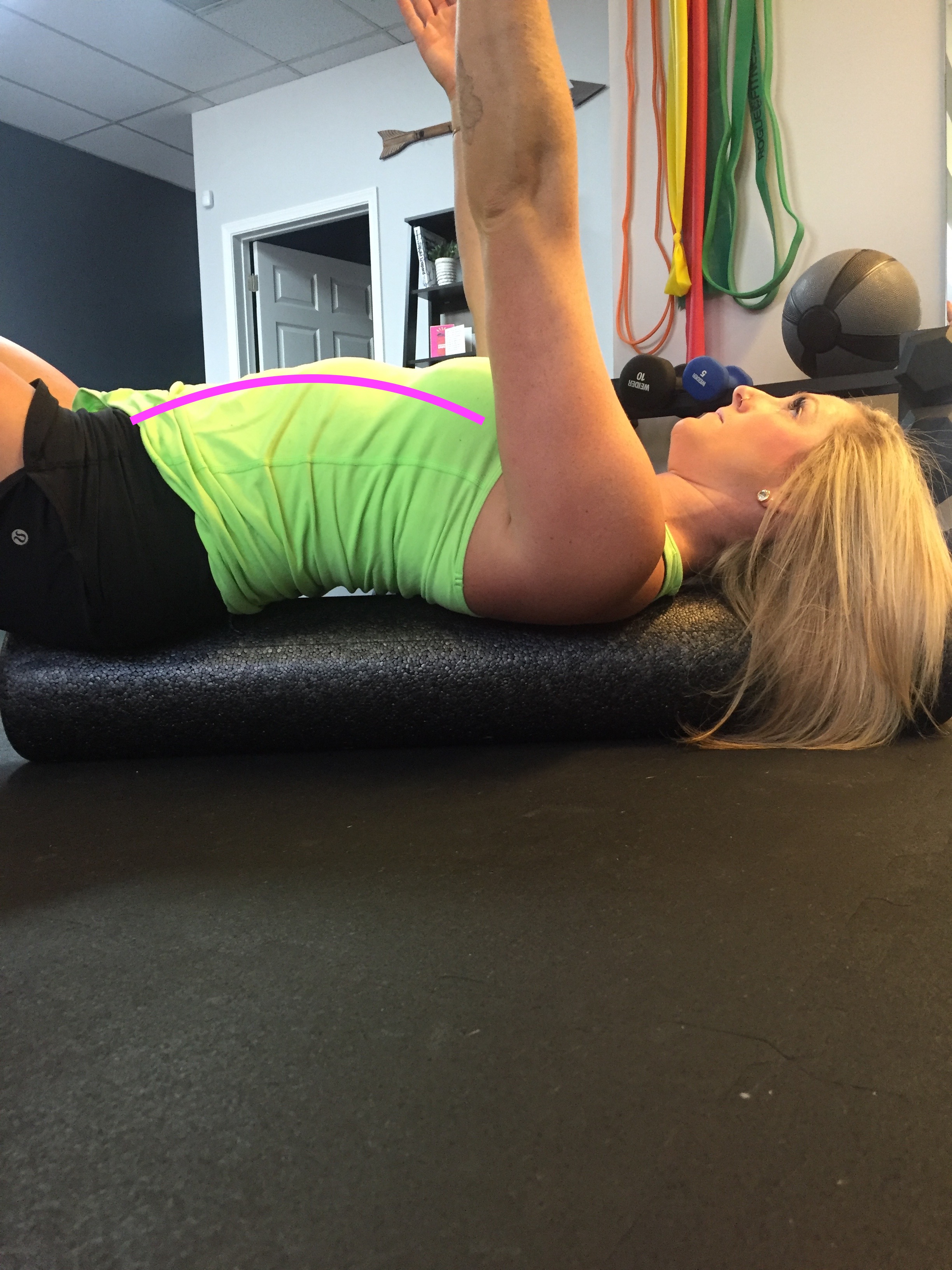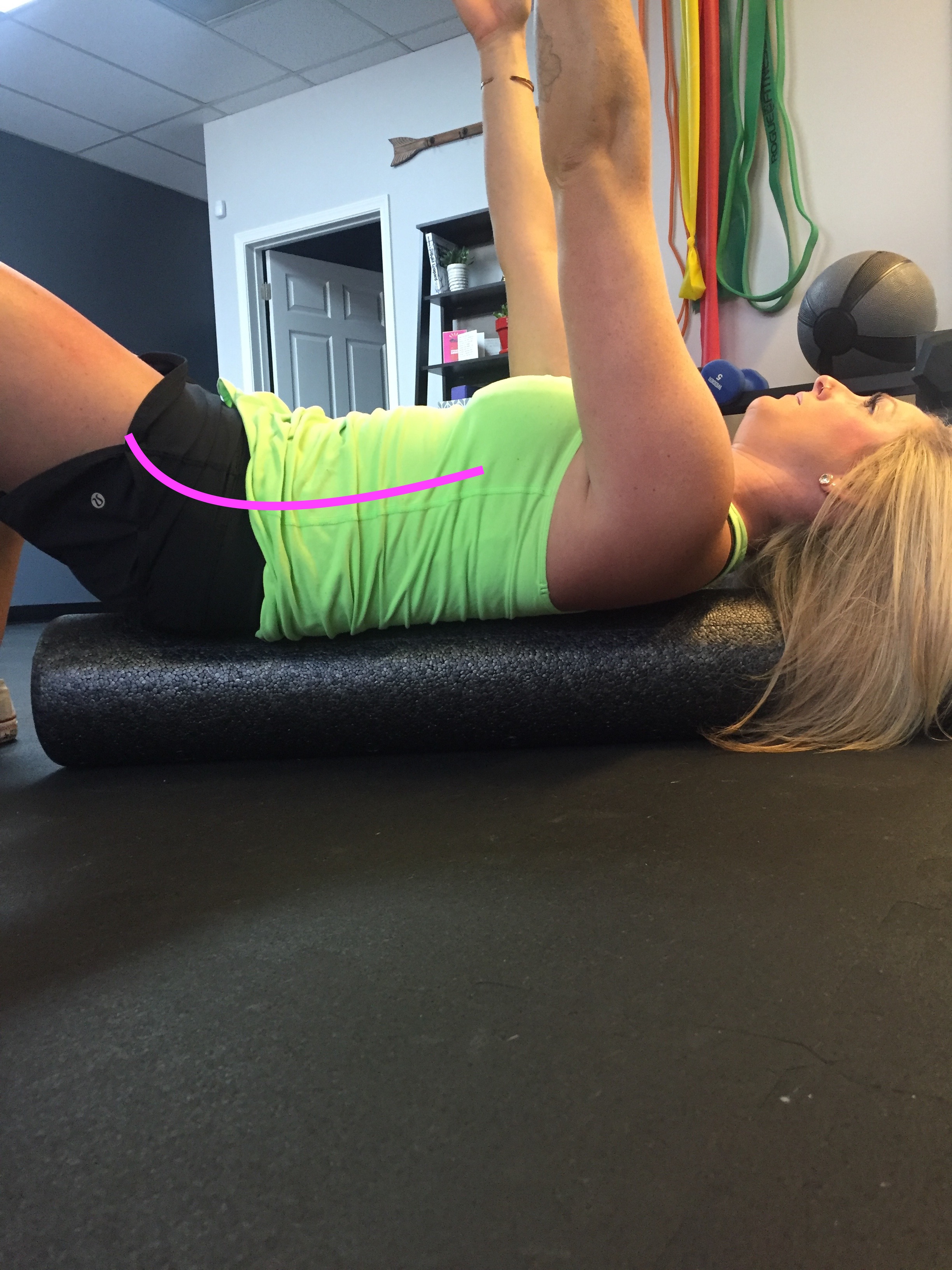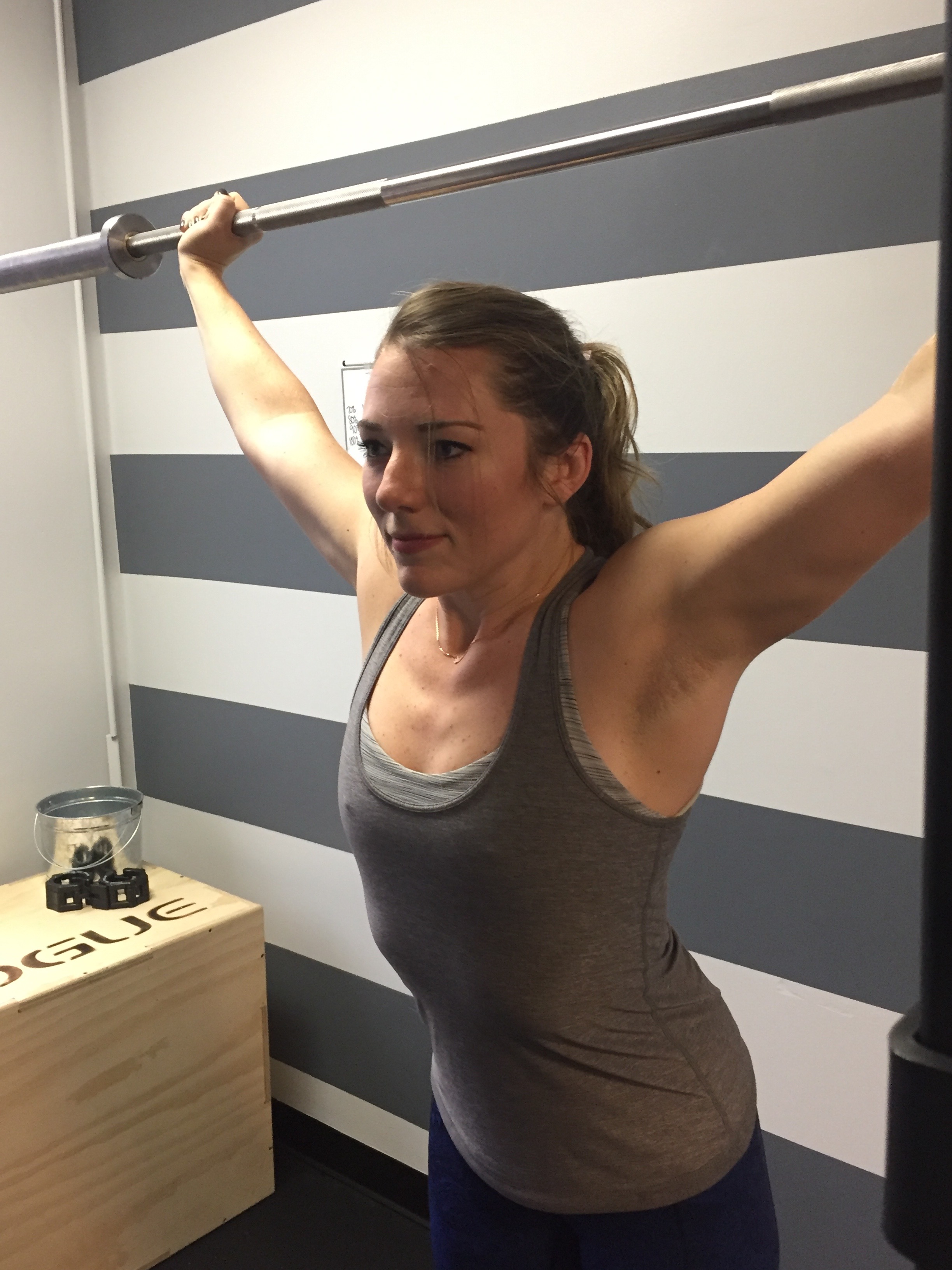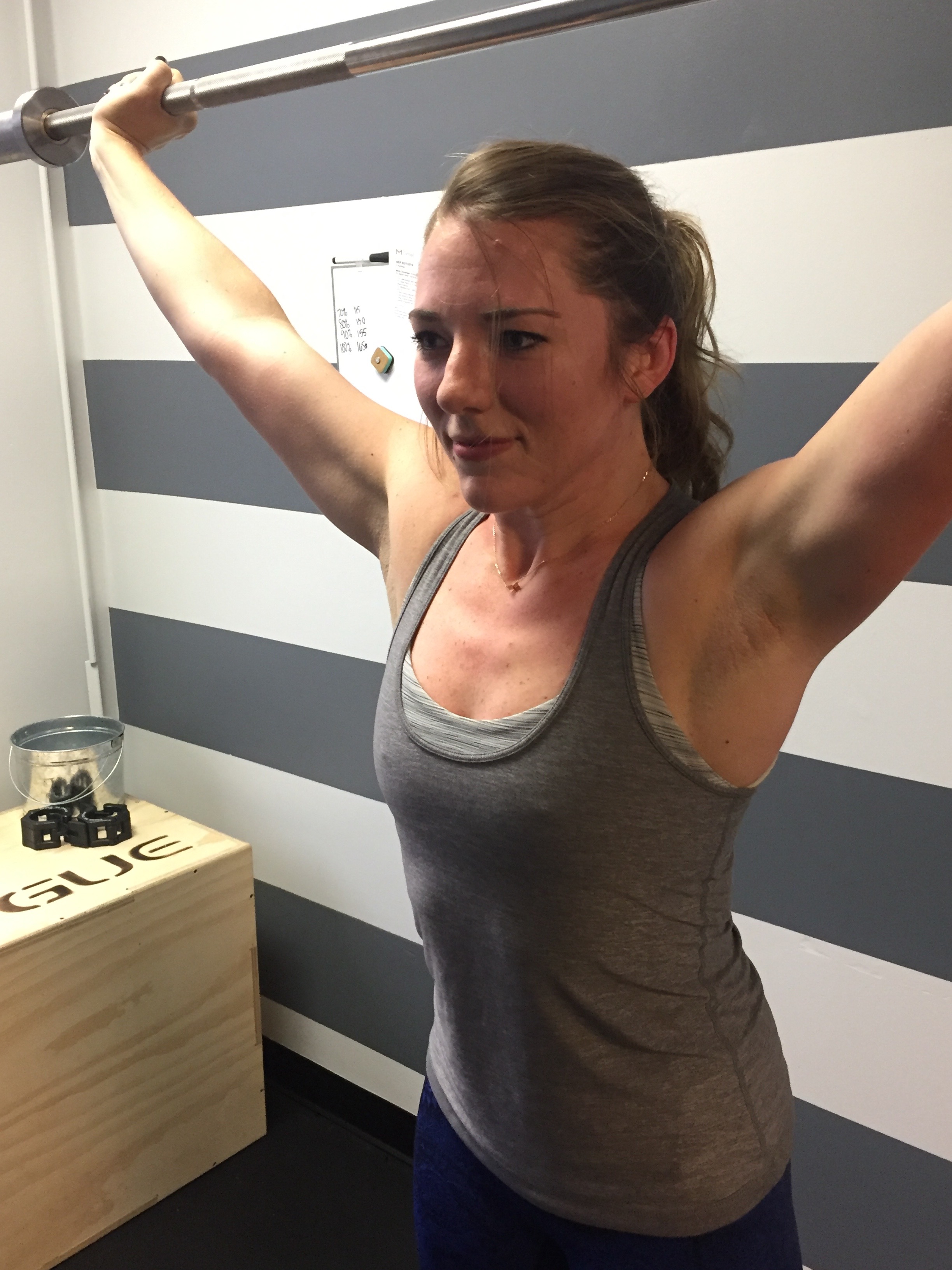Thoracic mobility
is commonly discussed as lacking in CrossFit and weightlifting athletes. “I can’t snatch or overhead squat because of my lack of mobility”. Some of this is true. If you define mobility as the ability to move, then yes, you are lacking mobility. If mobility means flexibility in your mind, you may be mistaking your stability deficit for a mobility deficit. In other words, you might have the mobility to get your joints into the necessary orientations for the skill or movement you are working on, but perhaps you do not have the motor control or stability to get into the position or to maintain the position. Often it is core stability that contributes to this “lack of mobility”. And sadly, no amount of range of motion exercises, stretching, foam rolling or smashing with a lacrosse ball will change your stability. Below we will address core stability as it relates to the thoracic spine or ribcage area.
If you are a patient of mine or if you have even been coached in a CrossFit class at Ballard CrossFit, you have heard this cue: “close your bowls”. It is an analogy that I never get sick of because it makes sense to most of my athletes. I first heard it described this way by Dr. Quinn Henoch of Juggernaut Training Systems and founder of Clinical Athlete. Look him up. Read his stuff. He is strong, mobile, stable (my favorite word in rehab), smart and willing to share his knowledge with the masses.
To explain the analogy: your pelvis is a bowl, with the opening facing up; your ribcage is an upside-down bowl. In order to create a stable midline, we need to close these bowls. For many, this means bringing the top bowl down, ie. pulling the ribs down.
Try it. Lie on your back with knees bent and head on the floor (let’s not complicate things with gravity). Now without tucking your pelvis, pull your ribs down. I like to use a foam roller as I can feel my tailbone and head on the roller. I am then trying to pull my bra line down to the foam roller by actively drawing my ribcage down in front (think upper abs).
This can be tricky for a lot of people to do without the result being that they tuck their pelvis under them. I don’t want that in this exercise – that is closing the bottom bowl. See if you can just move the ribcage in alignment with the pelvis without tucking the butt!
The image on the left demonstrates my "open bowl" or extended thoracic spine position. The right sided photo is my over-correction into a bottom bowl closed position, or a butt tucked position ... not what we want.
This is correct! My ribs are down but my hip flexors relaxed.
If this is difficult, below is a drill to help solidify this movement pattern for you:
Overhead core stability drill for an athlete who struggles with serratus anterior strength and the ability to maintain a ribs down position when overhead lifting. Some people need to do this with a dowel, not a weight.
Hard? Ok, now let’s try when you are standing against gravity:
On the left, this athlete is holding her overhead position with her top bowl spilling out and on the right, nicely closed, demonstrating thoracic STABILITY to safely and correctly hold that bar overhead. Notice the improved shoulder position.
Try this in standing without weight and then move to your loaded positions. Interesting to note that she felt like the bar was too far forward in in the correct position. This is because her brain has learned that the incorrect position on the left was normal. It took some time for her to get used to the new position but in the end, she has a much stronger overhead position and ultimately has the potential to lift more weight... the end goal, right!?
“You can’t teach an old dog new tricks.”
Oh, but you can!! If you find these exercises difficult, give them a try and see if you can improve upon your ability to create core stability with breath and repositioning vs. clenching everything you have and engaging your hip flexors. Try exhaling slowly but forcefully. This can help. Keep trying – this is a motor pattern that you are capable of changing. Its really difficult for many people though. And difficult motor patterns are easy to abandon when you feel like you can achieve another position effortlessly. In fact, the challenge is that our bodies learn to be efficient in our poor motor patterns. So, though the patterning may be incorrect, or less than ideal, we use it because it "works" for us ... for now.
You might be wondering “Why are our ribs stuck in this “open bowls” orientation? I would theorize that as weightlifters and CrossFitters we are stuck here for two reasons:
from all the inhaling we do
from all the thoracic extension we do in our training
Inhalation:
When the lungs inhale, the ribs expand. Similarly, when we exhale, the ribs contract and return to the starting position. We can say that inhalation is "opening of the top bowl" and exhalation is "closing of the top bowl". Both must occur for normal breathing. However, to add to this, we need to consider that rather than only opening in the front of the chest, normal in-breaths should involve 360 degrees of expansion. For those who do not have extensibility in the backside of the ribcage, this will feel abnormal and you will have to focus on breathing into what feels like the low back. If an athlete doesn’t know how to control this or has normalized some faulty patterns, the default position of the ribcage during inhalation is to “open the top bowl” forward. To me, this looks like a ribcage that expands forward and the athlete looks rigid and flat in their upper back.
In addition to HOW we inhale, there is the subject of HOW MUCH we inhale vs how much we exhale. There is often a discrepancy in this, especially with CrossFit athletes. It is a common thought that inhaling is the important phase in the act of breathing, and people try to control it. Because most people are busy taking an in-breath, they do not pay much attention to the exhale process. Without exhaling completely, excess carbon dioxide is left in the lungs. Carbon dioxide is a known stressor to the nervous system, causing increased oxidation, inflammation and acidification in your body.
But, more than this, the body senses that there is too much carbon dioxide and not enough oxygen (not because there is not enough AIR, but because the carbon dioxide was not exhaled and the chemical ratio is off). So, because of this imbalance, the body will naturally breath in. Since the lungs are still partially filled with carbon dioxide (and too much air), not as much oxygen (air) can get in. A cycle is set in motion and you keep inhaling for more oxygen, but can’t get enough because the lungs have not been properly emptied. This habit can lead to shallow breathing and holding your breath.
But, we can change this with practice. When we exhale completely, the lungs will recoil and reflexively inhale. This is a neurological reflex that involves the concept of negative pressure and really is optimal breathing. Optimal breathing will mean that you do not need to “take breaths” or forcefully exhale but rather that air will flow in and out effortlessly but with correct motor and neurological patterning.
Thoracic Extension in CrossFit and Weightlifting:
Caution: the following is not a popular opinion. I believe that CrossFit athletes have TOO MUCH thoracic extension. Yep, too much.
Often when I correct the curve of a weightlifter's upper back, getting them to pull their ribs down and round the upper back, the tell me they feel slumped. This is because the over-extension they are used to now feels neutral to them and the normalized position is foreign and feels incorrect. But, as you can see above, there is a natural roundness to this part of the spine that is necessary for things to work correctly. Namely, the motion of the shoulder blades is greatly affected by this ribcage and spinal position. To reiterate, I think most CrossFit and weightlifting athletes have a flat back in where there should be natural rounding.
Typical flat back of a weight lifter
A few things that can result from a lack of thoracic flexion:
shallow breathing
flaring of ribcage
a lack of upward rotation of shoulder blades when reaching overhead (can lead to shoulder pain)
a weak and lengthened serratus anterior (can lead to shoulder pain)
an overuse of the latissimus dorsi
pressure in the low back
impingement of the anterior (front sided) hip structures
This lifter demonstrates the necessary thoracic mobility AND stability to perform this high level movement.
Yes, the following is true:
athletes need sufficient thoracic extension (back bend in the rib cage area) in order to achieve a correct overhead position
most people sit all day at a computer and have forward posturing
many people are tighter in their anterior chain and weak in their posterior chain
shoulder pain can be caused by inadequate thoracic extension
This athlete demonstrates the typical thoracic extension utilized in a deadlift. Though we do not want to see her low back round, I would like to see her pull her ribs down in the front while still kicking on her lats and keeping the bar close.
However, clinically, what I see is a lack of thoracic flexion (rounding) and an inability for the shoulder blades to move out to the sides in order for the arms to reach overhead. My hypothesis is that CrossFit and weightlifting athletes are STUCK in extension. They feel stiff into that position because they are already there. Almost everything that we do in these sports takes us into extension: kipping motions, overhead finish positions, even pulling a bar from the floor encourages the position so that we do not over-round our spine and lose our positioning.
People look like this above image more than they are aware - and they sometimes think their shoulders hurt because of poor thoracic mobility. In my opinion, this athlete is already in thoracic extension. He needs to pull his ribs down, activate his core, and press that bar UP (using the serratus anterior) so that it is aligned more overhead. I would not expect him to successfully be able to squat down into an overhead squat from this position as it is not stable. But, this is a very common position that I see. And the solution is not thoracic extension over a foam roller. Make sense?? Starting to see the picture? Work to keep that top bowl down.
Take Away Messages:
So what does all this mean to you in the end. How can you address this? Is this a problem for you? Let’s start with these questions: do you feel that you can fully inhale and exhale, can you isolate ribcage movement from pelvis motion, do you flare your ribcage open when squatting (particularly overhead squatting), do you struggle to maintain a hollow position, do you frequently pop your upper back between your shoulderblades or feel like you need to massage there with a lacrosse ball, do you have shoulder impingement pain?
If yes to any of these issues, here are a few things to trial:
Close your ‘bowls’ to create a more stable midline
Make sure that you are exhaling
Do not mobilize your spine into extension if you are already stuck there
Improve your serratus anterior strength
Ensure that you are not overusing your lats
Work on static core control with exercises like planks and hollow holds
Talk to your physical therapist about the muscle imbalances present in your body which may be making these motor patterns difficult (first stop is a movement screen at Arrow Physical Therapy, even if you do NOT have pain).










